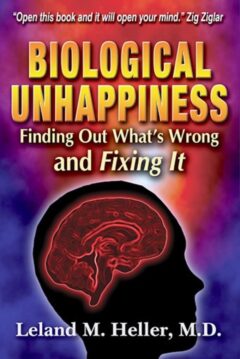1) frantic efforts to avoid real or imagined abandonment
2) a pattern of unstable & intense interpersonal relationships characterized by alternating between extremes of idealization and devaluation
3) identity disturbance: markedly and persistent unstable self-image or sense of self
4) impulsivity in at least two areas that are potentially self-damaging (e.g. spending, sex, substance abuse, reckless driving, binge eating)
5) recurrent suicidal behavior, gestures or threats, or self-mutilating behavior
6) affective instability due to a marked reactivity of mood (e.g., intense episodic dysphoria, irritability, or anxiety usually lasting a few hours and only rarely more than a few days)
7) chronic feelings of emptiness
8) inappropriate, intense anger or difficulty controlling anger (e.g., frequent displays of temper, constant anger, recurrent physical fights)
9) transient, stress related paranoia or severe dissociative symptoms
The DSM (Diagnostic & Statistical Manual) contains the DEFINITIONS of psychiatric disorders. These definitions – which are criteria based – are the results of consensus building from hundreds of psychiatrists of many different perspectives and belief systems from all over the world, not just the U.S.A. Definitions are regularly being revised as research and other information becomes available. The DSM IV is the latest edition, being published in 1994.
Like other diagnoses, diabetes is established by specific criteria such as fasting sugar greater than 126 on two separate occasions. Physicians can’t say things like “I don’t believe you have diabetes because you’re not thirsty,” and don’t have the right to establish their own criteria. Physicians do have the right to explain and treat disorders according to their knowledge, training expertise – but not to establish their own criteria. If a physician disagrees with the established criteria, he/she needs to explain the reasoning in the chart. An example is diabetes: a person in the hospital on intravenous sugar will have elevated fasting sugar readings, but this doesn’t mean diabetes because of extenuating circumstances.
There are many common misconceptions about the BPD diagnosis:
1) that the diagnosis is based on why it may have happened – NOT TRUE!
2) that the diagnosis is based on severity of symptoms – NOT TRUE!
3) that the diagnosis is based on the actual brain or thought mechanisms involved – NOT TRUE!
4) that the diagnosis somehow requires a response or lack of response to certain medications to be made – NOT TRUE!
5) that missing some symptoms – such as self-mutilation – means the diagnosis is not present – NOT TRUE!
6) that the diagnosis has a predictable outcome for everyone – NOT TRUE!
7) that it’s a label and not a diagnosis – NOT TRUE! Many individuals would like to see a different name for the diagnosis since the name “borderline” came from a different era and has continued through the present time.
8) that having the BPD or Bipolar means one cannot have the other diagnosis as well – NOT TRUE! They are not mutually exclusive and many individuals have more than one diagnosis, including both BPD and bipolar.
It’s crucial to remember that it is a criteria-based illness and is described as a “pervasive pattern…beginning by early adulthood and present in a variety of contexts…” For the BPD to be diagnosed, five of the nine criteria need to fit this definition.

Comments are closed.